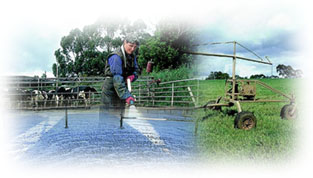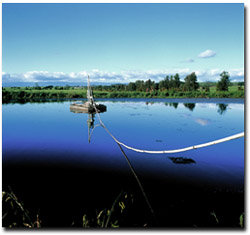Dairy Effluent
|  |
- If you are applying effluent you may need to adjust your fertiliser rates where effluent has been applied. Soil test areas, which have effluent, applied as per the rest of the farm.
- Minimise water entering your effluent pond/sump by diverting platecooler and stormwater away from the system. Recycle platecooler water through the shed or as yard wash-down.
 Planting trees on farms can achieve multiple benefits. Photographs by Rawdon Sthradher (Fine Focus Photography). | Other Considerations
|


